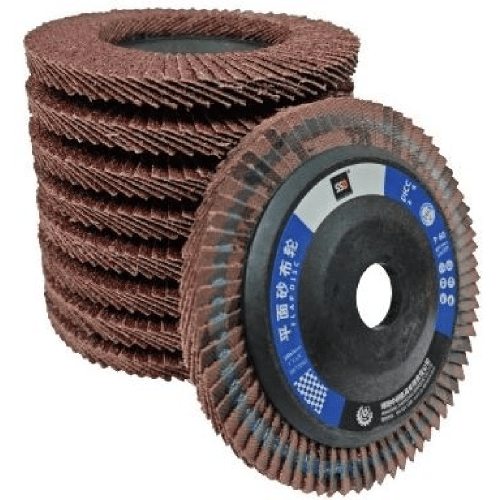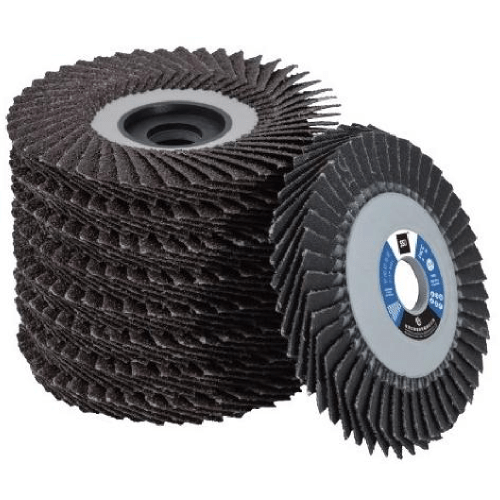The Evolution of Flap Wheels: From Traditional to High-Tech Innovations
Flap wheels have come a long way since their early days as simple grinding tools. What started as basic sandpaper flaps glued to a wheel has evolved into high-tech tools used in industries from automotive repair to aerospace manufacturing. Their journey reflects advances in materials, design, and engineering, making them more efficient, durable, and versatile. Let’s trace the evolution of flap wheels, from traditional models to today’s cutting-edge innovations.
The Early Days: Traditional Flap Wheels
The first flap wheels, developed in the mid-20th century, were designed to solve a simple problem: rigid sandpaper and grinding discs struggled to smooth curved or uneven surfaces. Early manufacturers found that overlapping small pieces of sandpaper (flaps) on a wheel created a flexible tool that could conform to shapes.
- Basic materials: Traditional flap wheels used aluminum oxide as the abrasive—affordable and effective for general grinding. The flaps were made from thick paper, and the core (center) was often wood or low-grade plastic.
- Simple design: Flaps were glued in a straight line around the core, with little attention to spacing or overlap. This made them stiff, limiting their ability to flex around curves.
- Limited uses: They were mainly used for heavy-duty tasks like removing rust from metal pipes or smoothing rough wood. Their short lifespan (flaps wore out quickly) and uneven performance kept them confined to basic workshops.
Despite their flaws, these early flap wheels were a step forward. They showed that flexible abrasives could outperform rigid tools on complex surfaces—laying the groundwork for future innovations.
The 1980s–2000s: Improvements in Materials and Design
As industries demanded better performance, flap wheels began to evolve. Manufacturers focused on durability, flexibility, and precision, leading to key upgrades:
- Better abrasives: Zirconia alumina emerged as a popular alternative to aluminum oxide. This harder, more heat-resistant material lasted 2–3 times longer, making flap wheels suitable for tough materials like stainless steel. Silicon carbide was also introduced for softer materials like aluminum and plastic, preventing scratches.
- Flexible cores: The core shifted from wood to reinforced plastic or metal, making flap wheels stronger and more balanced during use. This reduced vibration, a common issue with early models that caused user fatigue.
- Spiral-wound design: Instead of gluing flaps in a straight line, manufacturers started winding them in a spiral. This increased overlap between flaps, creating a smoother grinding surface and improving flexibility. Spiral-wound flap wheels could now handle curved surfaces like car fenders or tool handles with ease.
- Grit variety: Early flap wheels came in only a few grit sizes (coarse to medium). By the 2000s, fine grits (240–400) were available, allowing flap wheels to prep surfaces for painting or polishing—expanding their use beyond just grinding.
These changes made flap wheels a staple in automotive shops, metalworking, and woodworking. They were no longer just “rough tools” but versatile instruments for both heavy removal and fine finishing.
2010s–Present: High-Tech Innovations
In the last decade, flap wheels have undergone a revolution, driven by advanced materials and smart engineering. Today’s models are lighter, more efficient, and tailored to specific industrial needs.
1. Advanced Abrasive Materials
- Ceramic abrasives: Ceramic grains are harder than zirconia and self-sharpening—they break down into smaller, sharp particles as they wear. This makes them ideal for high-speed grinding of hardened steel, like in aerospace parts. A ceramic flap wheel can remove material 50% faster than traditional zirconia models.
- Nano-coatings: Some modern flap wheels have a thin nano-ceramic coating on the flaps. This reduces friction and heat, preventing the abrasive from clogging (a common issue when grinding soft materials like aluminum). The coating also extends flap life by 30–40%.
- Blended abrasives: Manufacturers mix materials (e.g., aluminum oxide and zirconia) to create hybrid flap wheels. These combine the affordability of aluminum oxide with the durability of zirconia, perfect for shops handling mixed materials.

2. Precision Engineering
- Variable density flaps: High-tech flap wheels use flaps with different thicknesses and spacing. Tighter spacing near the core provides stability, while looser spacing on the outer edges enhances flexibility. This “variable density” design lets them tackle both flat and curved surfaces without switching tools.
- Hollow cores: Some models have a hollow center, reducing weight and improving balance. This makes them easier to control in handheld tools, reducing user fatigue during long jobs.
- 3D-printed cores: A recent innovation, 3D-printed metal cores allow for intricate designs that optimize airflow. Better airflow keeps the wheel cooler, preventing overheating and extending lifespan—critical for high-speed industrial use.
3. Specialized Flap Wheels for Niche Industries
As technology advanced, flap wheels became tailored to specific fields:
- Automotive refinishing: Ultra-fine grit flap wheels (600–800 grit) with soft, foam-backed flaps are used to polish paint, removing swirl marks and creating a mirror finish. These replace labor-intensive hand sanding.
- Aerospace manufacturing: Flap wheels with non-metallic cores (to avoid sparking) are used to smooth titanium and composite parts. Their precision ensures no tiny scratches that could weaken aircraft components.
- Medical device production: Sterile, dust-free flap wheels (with anti-microbial coatings) polish stainless steel surgical tools, meeting strict hygiene standards.
These specialized designs show how far flap wheels have come—from one-size-fits-all tools to precision instruments for high-stakes industries.
4. Smart Features
The latest flap wheels are incorporating smart technology to boost efficiency:
- Wear indicators: Some models have color-changing flaps that shift from green to red as they wear down, signaling when it’s time to replace them. This prevents using worn-out wheels that leave uneven finishes.
- RFID tags: Industrial flap wheels may include RFID tags (radio-frequency identification) that track usage—how many hours they’ve been used, the speed they were run at, and the materials they’ve ground. This helps shops manage inventory and predict replacement needs.
The Future of Flap Wheels
Looking ahead, flap wheels are set to become even more advanced. Researchers are exploring:
- Biodegradable flaps: Made from plant-based materials, these would reduce waste in eco-conscious industries.
- Self-cooling designs: Embedded heat-dissipating materials could prevent overheating, even during non-stop use.
- AI integration: In smart factories, flap wheels might connect to sensors that adjust speed or pressure in real time, optimizing performance based on the material being worked.
FAQ
What made traditional flap wheels less effective than modern ones?
Traditional models used low-quality abrasives, stiff cores, and simple designs. They wore out quickly, couldn’t flex around curves, and left uneven finishes—limiting their use to basic tasks.
How do high-tech flap wheels improve safety?
Modern flap wheels have balanced cores that reduce vibration, lowering user fatigue. They also use stronger adhesives to prevent flaps from flying off, and some include safety features like wear indicators to avoid overuse.
Are ceramic flap wheels worth the higher cost?
Yes, for tough materials like stainless steel or high-volume work. They last longer and remove material faster, saving time and reducing the need for frequent replacements.
Can high-tech flap wheels be used with regular power tools?
Most can. They’re designed to fit standard angle grinders and die grinders, so users don’t need special equipment to benefit from their features.
What industries benefit most from modern flap wheel innovations?
Aerospace, automotive, and medical manufacturing rely heavily on high-tech flap wheels. Their precision and durability are critical for working with expensive, high-quality materials.
Do nano-coated flap wheels work better on soft materials?
Yes. The nano-coating reduces clogging, which is a big issue when grinding aluminum or plastic. This keeps the wheel sharp and prevents scratches on soft surfaces.
How has the spiral-wound design improved flap wheels?
Spiral winding increases flap overlap, creating a smoother grinding surface. It also makes the wheel more flexible, allowing it to conform to curves without leaving flat spots—key for complex shapes like car parts.
Table of Contents
- The Evolution of Flap Wheels: From Traditional to High-Tech Innovations
- The Early Days: Traditional Flap Wheels
- The 1980s–2000s: Improvements in Materials and Design
- 2010s–Present: High-Tech Innovations
- The Future of Flap Wheels
-
FAQ
- What made traditional flap wheels less effective than modern ones?
- How do high-tech flap wheels improve safety?
- Are ceramic flap wheels worth the higher cost?
- Can high-tech flap wheels be used with regular power tools?
- What industries benefit most from modern flap wheel innovations?
- Do nano-coated flap wheels work better on soft materials?
- How has the spiral-wound design improved flap wheels?


